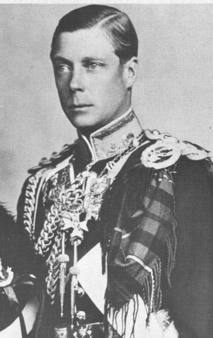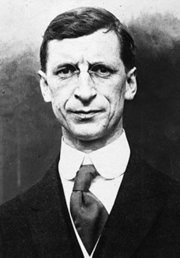External Relations Act
|
|
The Executive Authority (External Relations) Act, 1936 was an enactment of the Oireachtas (Irish parliament) in 1936. The Act was one of two passed suddenly to deal with the aftermath of the abdication of King Edward VIII as King of Ireland along with his other Commonwealth Realms.
| Contents |
Background
The decision of King Edward to abdicate, over the refusal of his prime ministers throughout the Commonwealth of Nations to accept his right to marry Wallis Simpson and remain on the throne, caused major problems for the President of the Executive Council of the Irish Free State (prime minister), Eamon de Valera. De Valera had been systematically stripping the Irish Free State Constitution of all references to the king and crown. However the abdication left de Valera with a difficult problem: under a previous commonwealth conference decision, matters to do with the crown requiring legislation had to be legislated for by each commonwealth state, unless the state requested that the United Kingdom legislate on the matter on its behalf.
That all meant that the abdication of the King, to have validity in the Irish Free State, had either to be legislated for by the Oireachtas, or legislated for with the approval of the Irish Free State, by the British Parliament. De Valera wanted neither to be seen to legislate for the crown nor to have to ask the British to do it for him.
The Two Acts
His solution was twofold. The Constitution (Amendment No. 27) Act removed the crown and king from the constitution and apparently abolished the governor-generalship. That however became problematic, with de Valera's own Attorney-General James Geoghegan, the Secretary to the Executive Council Maurice Moynihan and the Parliamentary Draftsman's office all contradicting de Valera and insisted that the office had not been properly abolished. To clarify matters, in 1937 the Executive Powers (Consequential Provisions) Act, 1937 retrospectively re-abolished the office and dealt with some financial provisions.
The External Relations Act, 1936 was the second part of de Valera's legislative strategy. Having abolished the crown and the role of the king in constitutional law, one day later de Valera resurrected the king to fulfil the head of state role in external relations, by means of a statute law enactment. To enable the Free State to recognise the abdication, the instrument of abdication and the accession of King George VI was recognised in one of the Act's schedules.
The Act explicitly acknowledged the accession to the Irish throne of the Duke of York, the heir presumptive to the previous king, by saying that
- His said Majesty shall, for the purposes of the foregoing sub-section of this section and all other (if any) purposes, cease to be king, and the king for those purposes shall henceforth be the person who, if His said Majesty had died on the 10th day of December, 1936, unmarried would for the time being be his successor under the law of Saorstát Eireann.
While de Valera sought later to suggest that the new king was not actually 'King of Ireland', as shown above in the line "the king for those purposes shall henceforth be the person..." George VI was unambigiously declared 'king of Ireland' by the Act. The only change was that his kingship was more limited than had been his brother's. This point was conceded by then Taoiseach John A. Costello in a speech to the Seanad Éireann a decade later.
The only functions left for the king to carry out were to
- accept credentials of foreign ambassadors to Ireland;
- sign Letters of Credence accrediting Irish ambassadors to other states;
- sign international treaties on Ireland's behalf.
These role had all belonged to the king previously via the Free State constitution.
The External Relations Act remained even after the Irish Free State was replaced by Éire, or Ireland, (now the Republic of Ireland) in December 1937, with the King of Ireland fulfilling the external affairs role that normally belongs to heads of state, with a new President of Ireland fulfilling an internal constitutional role.
Repeal
In the late 1940s, de Valera decided to change the law, though whether it would involve the total repeal of the Act, or merely its amendment, was not decided when he lost power in 1948. His then Attorney-General, Cearbhall Ó Dálaigh had been working on the various options when de Valera's Fianna Fáil administration was replaced by the First Inter-Party Government under Costello.
The Executive Authority (External Relations) Act, 1936 was finally repealed by the Republic of Ireland Act, 1948 which came into force on April 1, 1949. The new Act vested the powers possessed by the king in the president of Ireland.
External links
- Irish Statute Book (http://www.irishstatutebook.ie/front.html)
- Internet copy of Act as passed (http://www.irishstatutebook.ie/1936_58.html)
- Constitution (Amendment No.27) Act (http://www.irishstatutebook.ie/1936_57.html)
- Executive Powers (Consequential Provisions) Act (http://www.irishstatutebook.ie/1937_20.html)Template:Irish Free State


